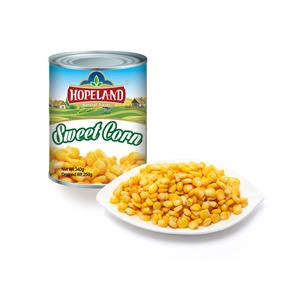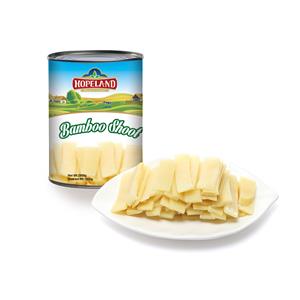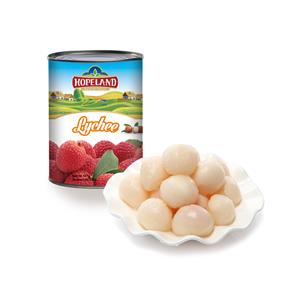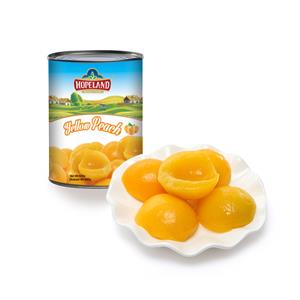Xiaoman: When Grains Begin to Plump — A Celebration of Abundance and Preservation
As spring draws to a close and summer begins to stir, the traditional Chinese calendar welcomes one of its 24 solar terms — Xiaoman (小满). Literally translated as "Lesser Fullness" or "Grain Full," Xiaoman typically falls around May 20–22, depending on the year. It marks a pivotal moment in the agricultural calendar when grains begin to plump but are not yet fully ripe, signaling the approach of summer harvest.
While deeply rooted in agrarian life, Xiaoman also resonates today — not just as a cultural marker of time, but as a reminder of the value of seasonal abundance, food preservation, and sustainable consumption. In this article, we will explore the historical and cultural meaning of Xiaoman, and how it intersects with modern food practices — particularly the growing importance of canned food in honoring tradition while meeting today’s global food demands.
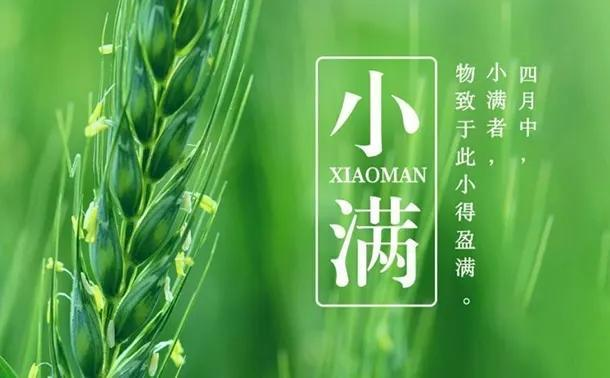
1. The Meaning of Xiaoman in Traditional Chinese Culture
Xiaoman is the eighth solar term in the Chinese lunisolar calendar and serves as a subtle, poetic reminder that nature is in transition. The term reflects a moment of anticipation: the grains are swelling, but not quite ready for harvest. It is a period of hope and patience, as farmers watch their crops closely, knowing that hard work and resilience are required before the bounty is fully realized.
Historically, Xiaoman was a time of careful observation and ritual. Farmers prayed for favorable weather, checked their irrigation systems, and started planning for the busy harvest season ahead. It was also a time to celebrate seasonal vegetables and early summer fruits, some of which would be eaten fresh — others preserved to ensure supply during less abundant times.
2. Seasonal Foods and Traditional Wisdom
Xiaoman is associated with early summer foods such as:
Fresh wheat shoots and barley
Green plums and loquats
Leafy greens like amaranth
Early melons and cucumbers
Fava beans and green peas
These ingredients, rich in hydration and nutrients, align with traditional Chinese medicine's guidance to "cool the body" and prepare for summer’s heat.
Food preservation also became essential during this time. Techniques like pickling, fermenting, drying, and canning (in modern times) helped families stretch seasonal abundance across the year — laying the foundation for the canned food industry that plays a vital role in the global food system today.
3. From Xiaoman to Canning: Preserving Nature's Fullness
The idea behind canning reflects the core spirit of Xiaoman: capturing and preserving food at its peak ripeness and nutritional value.
Why Canning Fits the Xiaoman Spirit
Seasonal Preservation: Just as Xiaoman acknowledges the importance of timing in agriculture, canned food locks in peak-season freshness — ensuring taste and nutrition even after the harvest has ended.
Reducing Waste: Xiaoman is about respecting nature’s rhythm. Canning allows us to reduce food waste by processing surplus produce before spoilage, aligning with sustainable agricultural goals.
Convenient Nourishment: In ancient China, preserved foods were stored for times of scarcity. Today, canned goods provide easy, long-lasting access to fruits, vegetables, meats, and sauces — available any time, anywhere.
Thus, while the festival itself is centuries old, canning is a modern manifestation of Xiaoman’s core values: abundance, responsibility, and preparation.
4. Popular Canned Foods During the Xiaoman Season
Let’s explore how some popular canned foods can reflect the flavors and values of Xiaoman — and offer global consumers a taste of this important seasonal turning point.
Canned Baby Corn
Baby corn symbolizes early harvest, making it an ideal product for the Xiaoman season.
Packed at peak freshness, it’s ideal in stir-fries, salads, or pickled dishes.
Nutrient-rich and low in calories — supporting the idea of light eating during seasonal transition.
Canned Loquats
Loquats ripen in May and are a beloved seasonal fruit in southern China.
Their short harvest window makes canning a vital tool to preserve their sweet, tangy flavor and medicinal properties (especially for throat soothing).
Perfect for desserts, drinks, or eaten on their own.
Canned Yellow Peaches
Though not harvested until mid-summer, peaches symbolize longevity and abundance.
Early-harvest varieties can be canned and offered during Xiaoman as a sign of the fruitful season ahead.
Canned Fish (e.g., Sardines, Mackerel, Tuna)
With the fishing moratorium in place from May to August in parts of China, canned fish becomes an essential resource.
Processed and stocked before the ban, it reflects the Xiaoman principle of preparing in advance for leaner times.
Canned Bamboo Shoots or Water Chestnuts
These seasonal vegetables are harvested in spring and early summer.
Their crunchy texture and light flavor make them a perfect pairing for summer dishes.
Canned versions extend their short shelf life, allowing enjoyment beyond the season.
5. How Food Businesses Can Celebrate Xiaoman with Canned Products
As more consumers seek seasonal eating, global flavors, and sustainable choices, Xiaoman offers an excellent opportunity for food brands and retailers to spotlight canned products in a fresh way.
Marketing Ideas:
“Xiaoman Specials”: Bundle canned products that highlight early-summer harvest — such as loquats, peas, and baby corn — into curated boxes or meal kits.
Cultural Education: Share the story of Xiaoman on packaging or in online content to build emotional connection and cultural curiosity.
Seasonal Recipes: Offer cooking demos or digital recipe cards using canned ingredients with a Xiaoman twist — like loquat compote, mackerel rice bowls, or bamboo shoot salad.
Sustainability Messaging:
Emphasize how canned products reduce waste and preserve harvests at peak — honoring the Xiaoman spirit of efficiency and gratitude.
Highlight your brand’s sustainable sourcing, recyclable packaging, or carbon footprint reduction to align with Xiaoman’s theme of harmony with nature.
6. Xiaoman Around the Table: A Modern Meal Idea with Canned Goods
Here’s an example of a Xiaoman-themed meal made entirely from canned or preserved ingredients:
Starter – Bamboo Shoot & Water Chestnut Salad
Use canned bamboo shoots and sliced water chestnuts with sesame oil, vinegar, and chili flakes.
Main – Mackerel and Pickled Mustard Stir-Fry
Stir-fry canned mackerel with garlic and pickled mustard greens, served over steamed rice.
Dessert – Loquat Syrup Compote
Simmer canned loquats with rock sugar and ginger, served chilled with jelly or yogurt.
Drink – Arbutus Sparkling Tonic
Mix canned arbutus syrup with soda water, lime juice, and fresh mint.
This menu showcases the seasonal balance, light nutrition, and elegant flavor Xiaoman is known for — using the convenience of canned goods to honor tradition in a modern way.
7. Final Thoughts: Honoring Xiaoman in a Modern World
Xiaoman reminds us that true abundance lies not just in what we harvest, but in how we prepare, preserve, and share it. As one of the 24 solar terms, it bridges the gap between nature’s rhythms and human activity, encouraging mindfulness, respect for the land, and gratitude for what is growing — even if not yet fully ripe.
In today’s globalized food system, canned foods represent a powerful way to continue this legacy. By preserving the gifts of the season, minimizing waste, and offering nutritious, flavorful meals throughout the year, we are carrying forward the values of Xiaoman in ways that resonate across cultures and time zones.
So as the days grow warmer and the fields begin to swell with life, take a moment to honor Xiaoman — perhaps with a can of loquats in hand, a cool bowl of water chestnut salad, or a delicious tin of mackerel. Whether you are in Beijing, Bangkok, or Boston, this timeless solar term invites all of us to appreciate what’s growing — and to preserve it with care.

